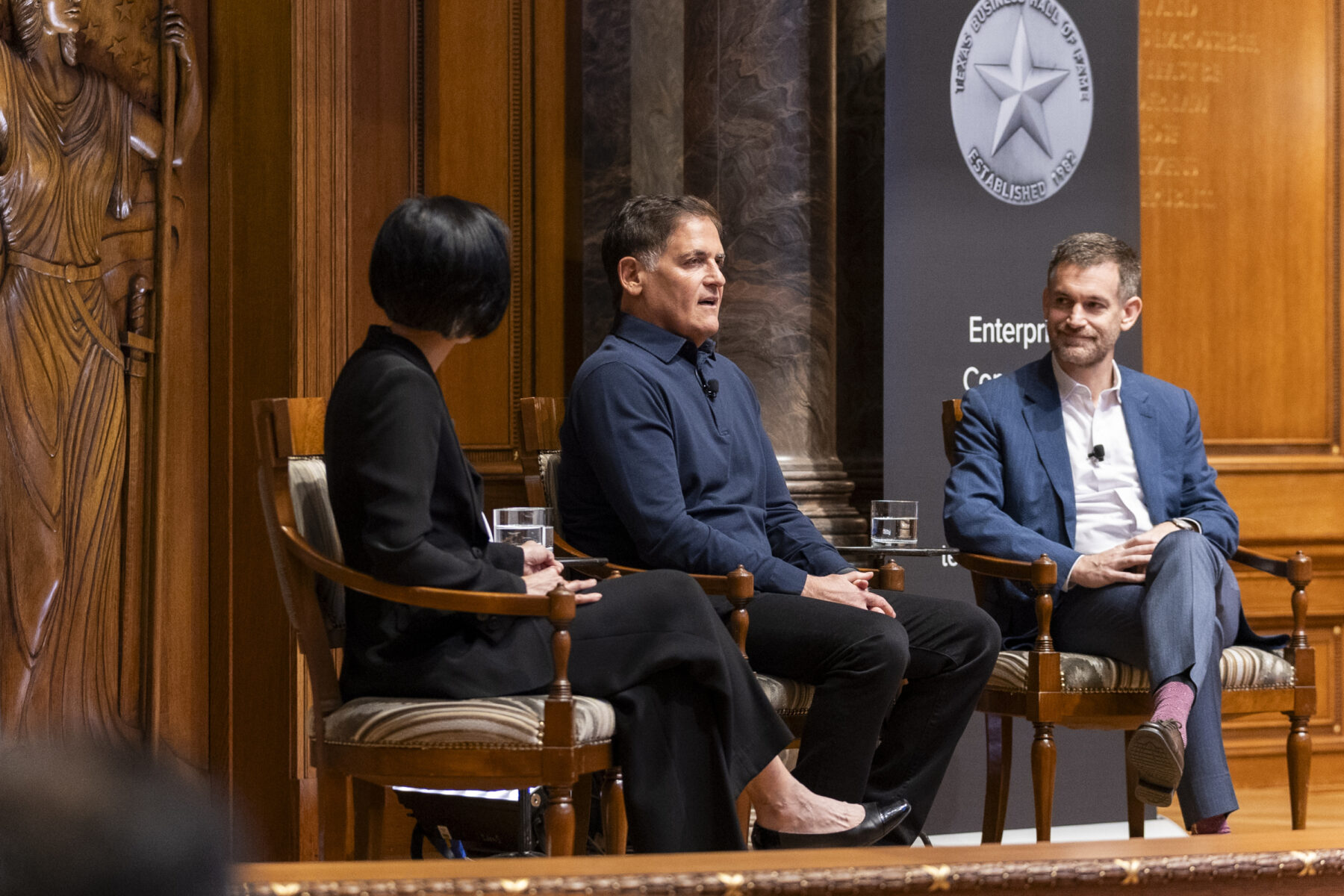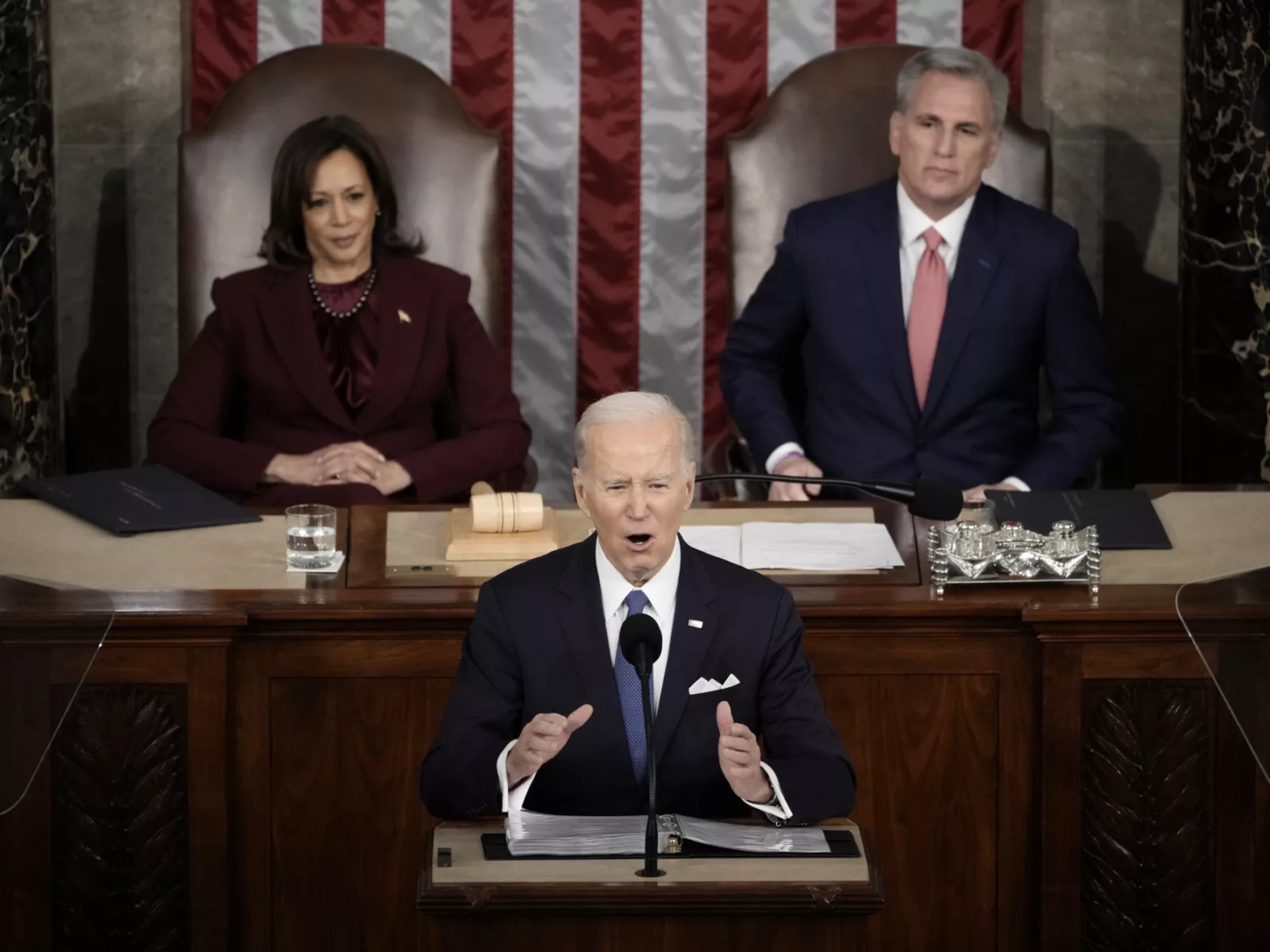Hercules tackled 12 near-impossible labors to prove his worth, so consider it appropriate that a statue of the Greek demigod stood over the stage this week as John Arnold was asked about cleaning a modern-day Augean stable – the American health care system.
At an event organized by the Texas Business Hall of Fame at the palatial Old Parkland campus in Dallas, Arnold Ventures’ founder and co-chair was joined by Mark Cuban, former owner of the Dallas Mavericks and co-founder of Cost Plus Drugs, for a conversation about the challenges facing health care and potential solutions.
“It’s the largest industry in the United States – 18 percent of GDP – and it has almost every market failure you can imagine.”John Arnold, Arnold Ventures’ founder and co-chair
So, what is the path forward to ensure that this massive system spends dollars effectively, delivers better outcomes, and reduces disparities in access?
When asked by moderator Vivian Ho, chair in health economics at the Baker Institute for Public Policy, for the most impactful policy solutions, Arnold noted that there is no silver bullet answer. Instead, he pointed to three incremental reforms lawmakers can address today.
1. Site-neutral reform
A loophole in Medicare billing allows hospitals to buy up doctors’ offices and charge higher hospital prices for routine medical services without changing anything in the office except for the logo on the door.
Arnold pointed to an op-ed in the Dallas Morning News by the former president of the Texas Medical Association as an example of what this looks like.
“For an echocardiogram, he was getting about $130. The exact same service two floors down, because it was owned by a hospital system, was getting $535 reimbursements,” Arnold said. “This wasn’t the intent of the system. It is a loophole that needs to be closed. Depending on how you craft it, fixing this can save up to $150 billion over 10 years.”
2. Unchecked hospital consolidation
Corporate consolidation can lead to economies of scale, which means more efficient business practices and lower consumer costs. In health care markets, however, hospital consolidation has a record of leading to less competition and higher prices without improving the quality of care patients receive. One solution is for federal and state policymakers to step up and prevent these anti-competitive mergers, in addition to taking action to address the harmful impact of the widespread consolidation that’s already occurred in health care markets.
Arnold pointed out that Dallas experienced this problem first-hand when a private equity group bought the locally based U.S. Anesthesia Partners and effectively consolidated the statewide market. The Federal Trade Commission eventually challenged the group for anticompetitive behavior and unfair labor practices.
“You get higher prices because you have a financial sponsor who has figured out how they can game the system and get higher profits,” Arnold said. “So, what can you do on this? I think there has to be much stricter review of consolidation in health care markets.”
3. Reference pricing
In a functioning market, prices reflect supply and demand. But health care markets are overwhelmingly concentrated, allowing the biggest players to set their own prices.
“We have this market that is just a consolidation of giants,” Arnold said. “You have a handful of insurers, a handful of hospital systems at most if you’re in a big city.”
Some states are beginning to take on this challenge of spiraling prices, Arnold noted, by requiring that hospitals cap prices at a certain percent of Medicare’s rates for services provided to state employees – also known as reference pricing.
“You’re seeing it across the political spectrum,” Arnold said. “Everybody is saying: ‘This market is so busted, we have to do something.’”



















